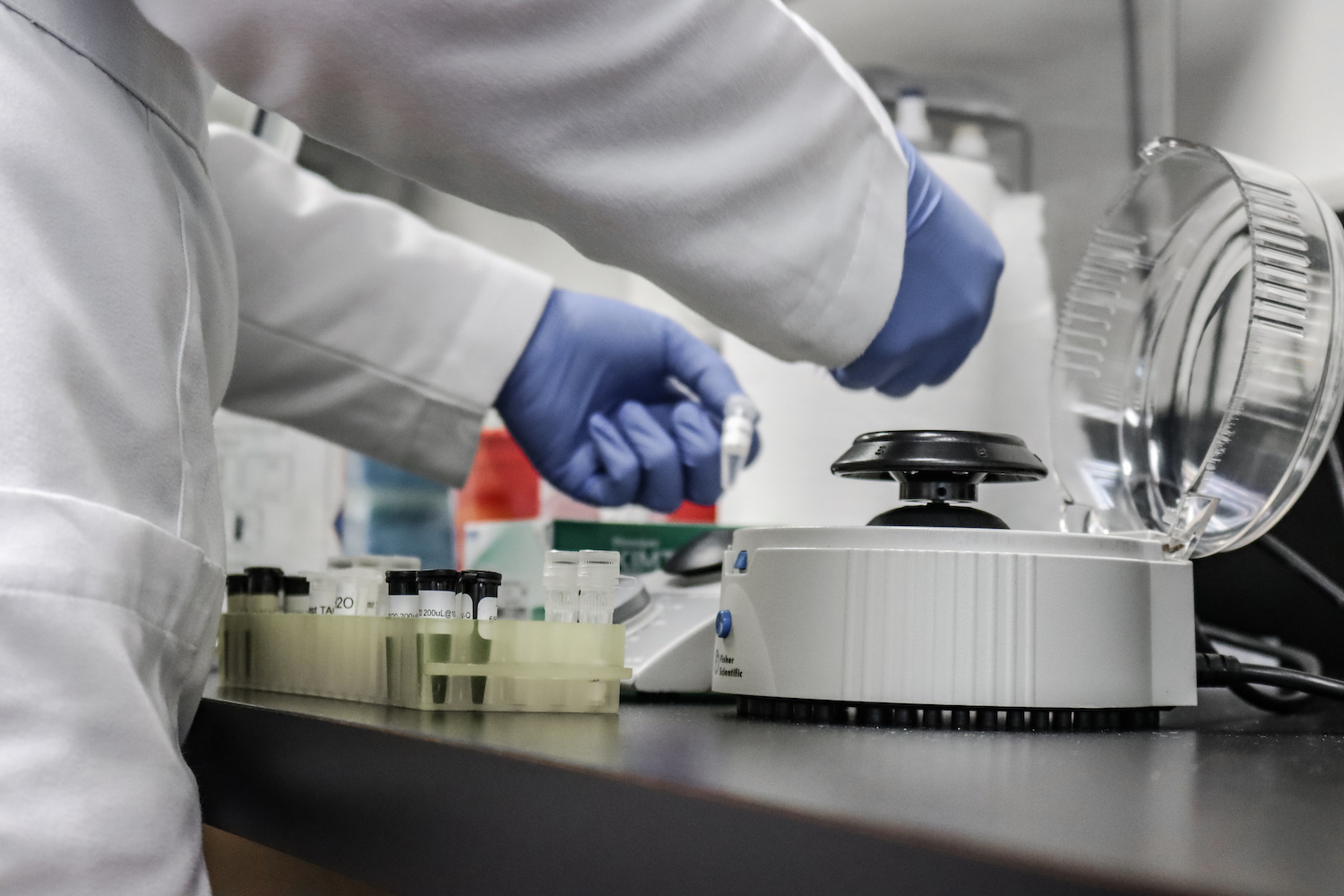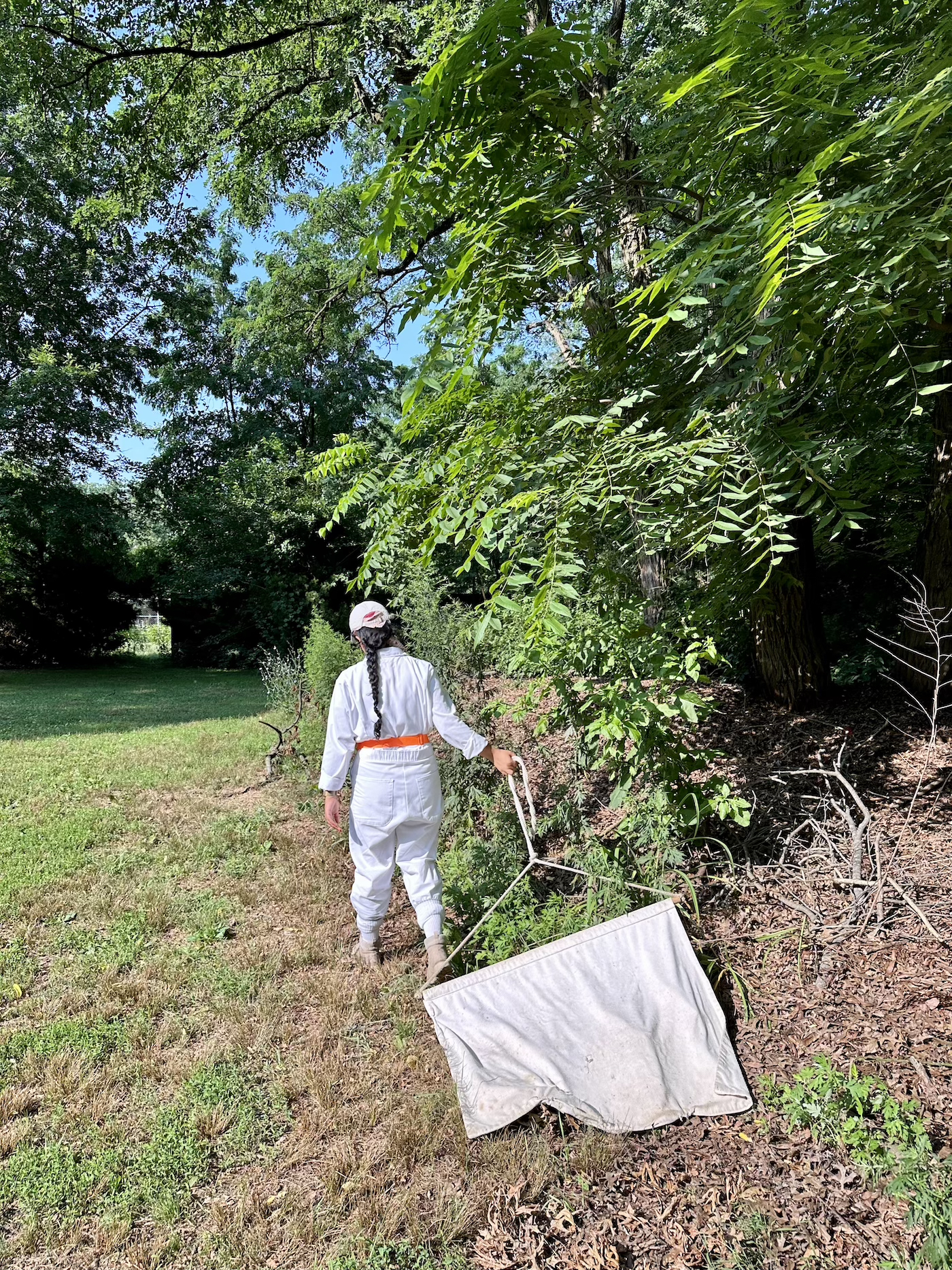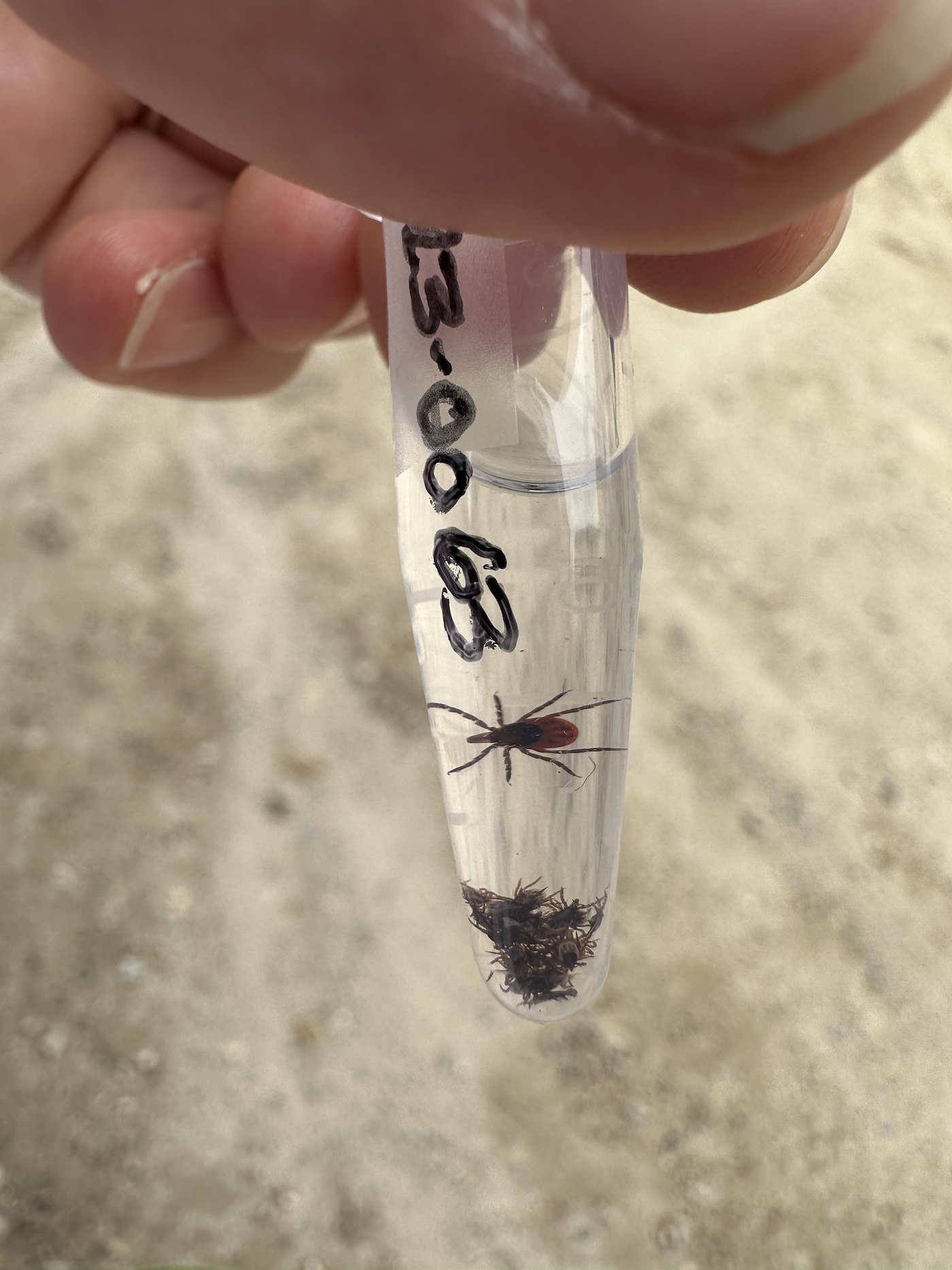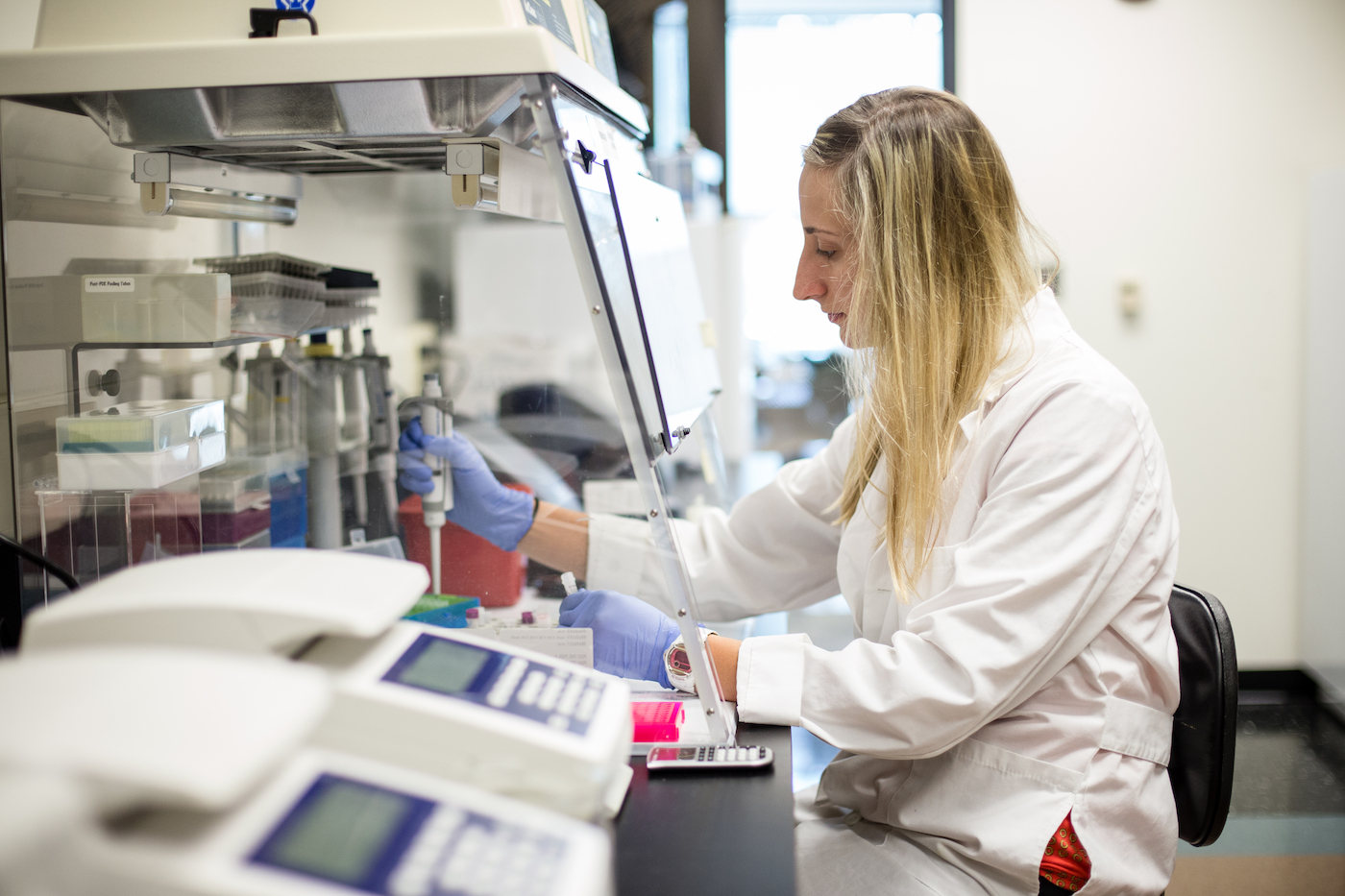Your Tick Bite Can Help Scientists Map The Spread Of Disease
Resources like “The Tick App” and local tick research labs can help you learn about tick exposure and contribute to the science that’s tracking their impact.

One step in the process of handling some samples prior to tick testing at the Pennsylvania Tick Research Lab. Credit: East Stroudsburg University
 You’re walking back from a beautiful summer day outdoors, when you feel a small, hard dot underneath your arm. You take a look and—gulp—it’s a tick. Many of us know what to do in this situation: Remove the tick safely, and go to a doctor if you develop a rash or a fever. But as ticks spread into new areas and the prevalence of the many diseases they carry rises, you might have doubts if you’re bitten by a tick you don’t recognize. Don’t worry—there’s an app for that.
You’re walking back from a beautiful summer day outdoors, when you feel a small, hard dot underneath your arm. You take a look and—gulp—it’s a tick. Many of us know what to do in this situation: Remove the tick safely, and go to a doctor if you develop a rash or a fever. But as ticks spread into new areas and the prevalence of the many diseases they carry rises, you might have doubts if you’re bitten by a tick you don’t recognize. Don’t worry—there’s an app for that.
Dr. Maria Diuk-Wasser, a professor and tick disease vector researcher at Columbia University, believes that education is key to both preventing tick bites and researching exposure risk. In collaboration with other labs from around the country, her team has created an app called “The Tick App” to help inform people about tick safety, and to contribute to surveillance data wherever they’re found.

Through app users, the project has recorded over 11,000 tick encounters across the Midwest and Northeast between 2019 and 2021. The data from that project has allowed researchers to create a map of where the encounters occurred and beta-test simple tick identification methods for further educational use.
“Community science is fundamental to our study of tick-borne disease risk, since human-tick encounters are a key measure of risk and we have no way to measure this experimentally,” says Diuk-Wasser.
One culprit implicated in the widening range of ticks is global warming due to climate change. But other contributing factors, which include land use, host population, and even human behavior, are still being understood.
“Ticks require certain habitats to survive, and hosts to obtain a meal and move in the environment,” says Diuk-Wasser. “The increase in certain animal populations—in particular deer, which are the hosts for the adult ticks—has been and continues to be a key factor.”

Diuk-Wasser says that once people learn more about ticks and their biology, they feel empowered to manage a tick encounter. “People think they’ve checked for ticks, but are not aware how small nymphal ticks are—the size of a poppy seed—which is the life stage of the tick more likely to be missed, thus causing an infection.”
But, as anyone who’s been bitten by a tick knows, education and even prevention can only get you so far.
Once you’ve been bitten, there are still choices to make about how to best guard your health. Dr. Nicole Chinnici, director of the Pennsylvania Tick Research Lab at East Stroudsburg University, says that sending a tick that’s bitten you to a lab to test it for pathogens is a key part of preventing the effects of long-term tick-borne disease.
“It really does allow for early understanding if you’ve been exposed to a tick-borne illness,” Chinnici says, explaining that if you wait for symptoms of a tick-borne disease it can be hard for doctors to identify the problem. “The hallmark symptoms for Lyme disease and other types of foreign illnesses are very similar to things like COVID-19 or just general cold and flu.”
Ticks are unique in that they have a number of feeding life stages, and may acquire different pathogens throughout their lifespan. Testing ticks also means that a person can get clarity on which disease they may be exposed to, whether it be alpha-gal syndrome from a Lone Star tick, or the much less common but potentially life-threatening Powassan virus.
“I think a lot of people always assume it’s just Lyme disease,” Chinnici says. “It’s common in a lot of the Northeast [and] mid-Atlantic states for ticks to carry more than one tick-borne illness.”
Chinnici’s lab collects ticks from around the country, testing them for up to 18 pathogens that can cause tick-borne disease in humans. Researchers can compile data from these kinds of lab tests into maps to see where ticks are biting people, and what pathogens they might be spreading over time.

Self reported data is critical to accurately measure the risk of tick-borne infection. In the mid-1990s to the 2010s, about 30,000 people a year reported that they were diagnosed with Lyme disease to the CDC. However, the agency now uses data from commercial lab reports and insurance claims to help measure how many people are diagnosed and treated for Lyme, which has revised that estimate to about 476,000.
According to Chinnici, there are still a lot of uncertainties about how these pathogens interact with each other, within the tick, the other animals involved in its lifecycle, and people. In order to start developing more advanced treatments for tick-borne disease, she’d like to see more baseline research on ticks and their pathogens.
Chinnnici says that it’s difficult for doctors to develop treatments when there isn’t a good understanding of how the various biological factors that create tick-borne disease interact. To come up with effective treatments, “the research institutes and the medical professionals need to [work] together,” she says.
Knowing that tick-borne disease continues to be a problem, potentially exposing yourself or your children to ticks outdoors can be scary. But both Chinnici and Diuk-Wasser want people to know that they can protect themselves while enjoying time outside.
“Greenspaces are an incredible asset to cities, with innumerable benefits for human health and wellbeing,” says Diuk-Wasser. “Wildlife in cities may introduce vectors or pathogens, but we need to think of the best ways to minimize that risk and continue enjoying nature.”
Check out and download The Tick App here.
If you remove a tick from yourself and want to have it tested, find out how to send it off to the Pennsylvania Tick Research Lab.
Emma Lee Gometz is Science Friday’s Digital Producer of Engagement. She writes SciFri’s “Science Goes To The Movies” series and is a journalist and illustrator based in Queens, NY.